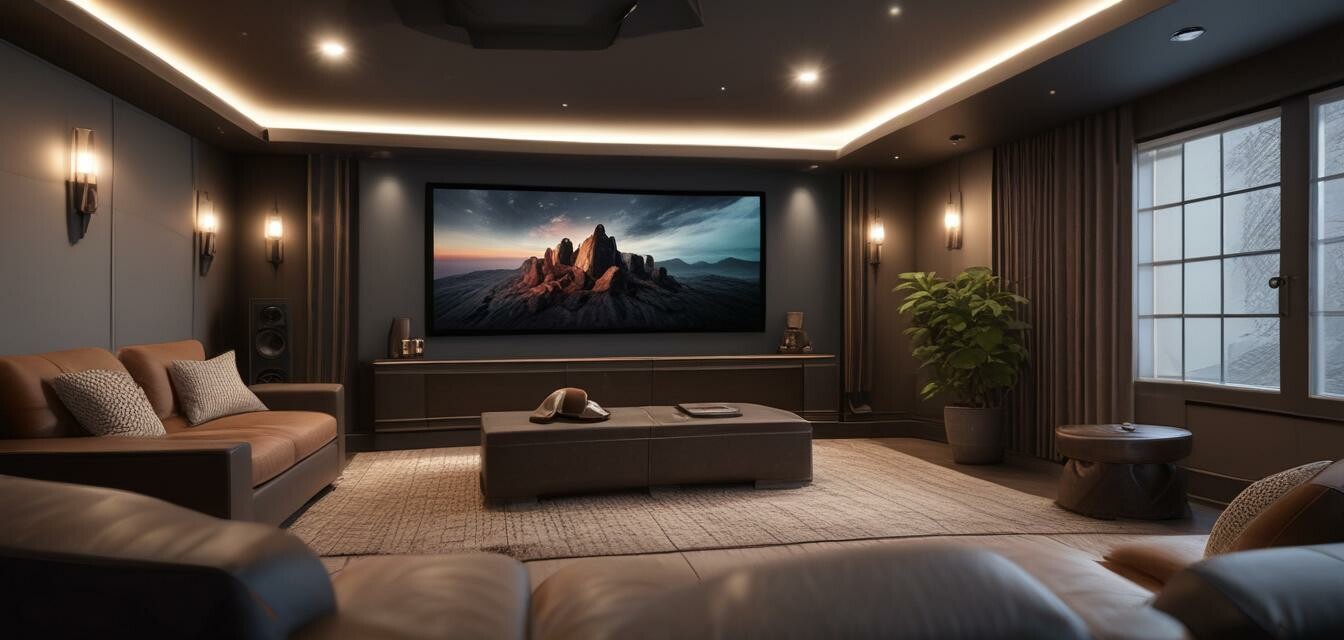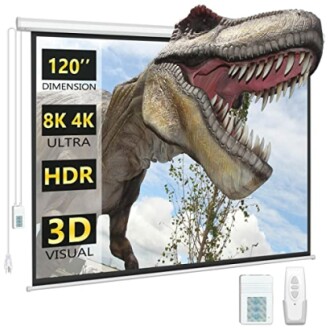
How to Choose the Right Size Screen for Your Home Theater
Key Takeaways
- Consider your room dimensions and layout when selecting screen size.
- Viewing distance from the screen significantly impacts your experience.
- A good rule of thumb is to have 1.5 to 2.5 times the screen diagonal size in distance.
- Different types of screens may impact your decisions; consider ambient light situations.
- Proper aspect ratio matters: 16:9 for most movies and 2.35:1 for widescreen formats.
Introduction
When setting up a home theater, selecting the right screen size is crucial for an immersive experience. The ideal screen size will depend on various factors such as the dimensions of your room and the distance from your seating to the screen. In this guide, we will explore how to choose the right size screen for your home theater to optimize viewing pleasure.
Understanding Room Dimensions
The first step in determining the right screen size is understanding your room dimensions. Here are some important factors to consider:
- Width: The overall width of the room will influence how large your screen can be without crowding the space.
- Height: Ensure that there is sufficient height to install the screen safely and for optimal viewing.
- Length: The distance from the screen to your seating area must be taken into account to prevent discomfort during viewing.
Calculating the Optimal Screen Size
To find the right screen size, you can use the following formula based on your viewing distance:
- For HD (1080p) content: Multiply your viewing distance in inches by 0.84.
- For 4K content: Multiply your viewing distance in inches by 0.62.
For example, if your viewing distance is 120 inches (10 feet), the recommended screen size for HD would be:
120 inches × 0.84 = 100.8 inches (rounded to 100 inches screen).
Viewing Distance and Screen Size
| Viewing Distance (Feet) | Recommended Screen Size (Inches) |
|---|---|
| 8 | 70 |
| 10 | 100 |
| 12 | 120 |
| 15 | 150 |
Types of Projector Screens
When choosing a screen, consider the different types available:
- Electric Projector Screens: These are motorized screens that can be retracted when not in use.
- Fixed Frame Screens: These screens are permanently mounted, providing a taut screen surface for better image quality.
- Portable Screens: Great for those who need flexibility; however, size may be limited.
- Ambient Light Rejecting (ALR) Screens: Ideal for rooms with ambient light, minimizing reflections and keeping colors vibrant.
Recommended Products
Here are two excellent choices for projector screens and how they fit into your home theater setup:
Electric Projector Screen with Remote
The DINAH 120 inch Projector Screen offers a large electric screen that is perfect for movie enthusiasts, featuring motorized convenience and a high-quality display.
Learn MoreVIVIDSTORM 120 inch CineVision Pro Screen
Experience stunning visuals with the VIVIDSTORM screen, perfect for ambient light rooms, supporting up to 8K resolution.
Learn MoreAspect Ratios and Their Importance
The aspect ratio of your screen is fundamental for the type of content you will watch. The most common ratios are:
- 16:9: Standard for most movies and TV shows.
- 2.35:1: Ideal for widescreen films; offers a cinematic experience.
Choosing the correct aspect ratio will enhance your viewing experience, so align your screen accordingly.
Additional Considerations
Here are a few more tips to keep in mind when choosing your screen:
- Ensure proper mounting to avoid screen instability during use.
- Consider the screen’s material, as some materials are better for different lighting conditions.
- Invest in good quality cables to improve your overall audio and video performance.
Conclusion
Choosing the right screen size for your home theater involves understanding your room's dimensions, knowing your viewing distance, and selecting the appropriate screen type and aspect ratio. By following these guidelines, you can create a stunning home theater experience that provides enjoyment for family and friends alike.
Tips for Beginners
- Measure your space: Always have accurate dimensions of your room before making a purchase.
- Test before you buy: Try visiting different stores to view screens and determine what you prefer.
- Ask for recommendations from friends or online communities.
- Don’t forget about sound: Complement your screen choice with quality speakers.
- Be aware of your décor: Choose a screen that fits the aesthetics of your room.



